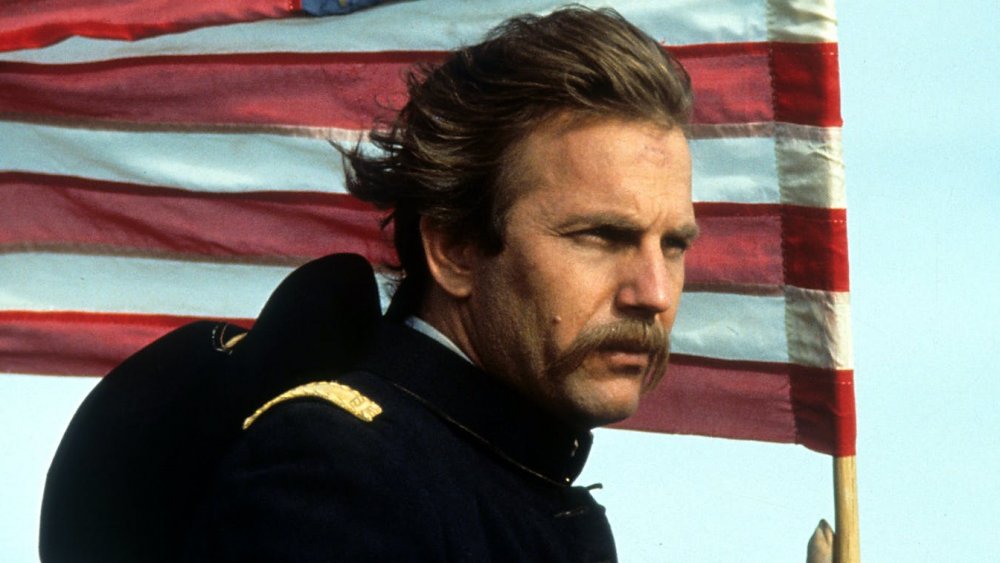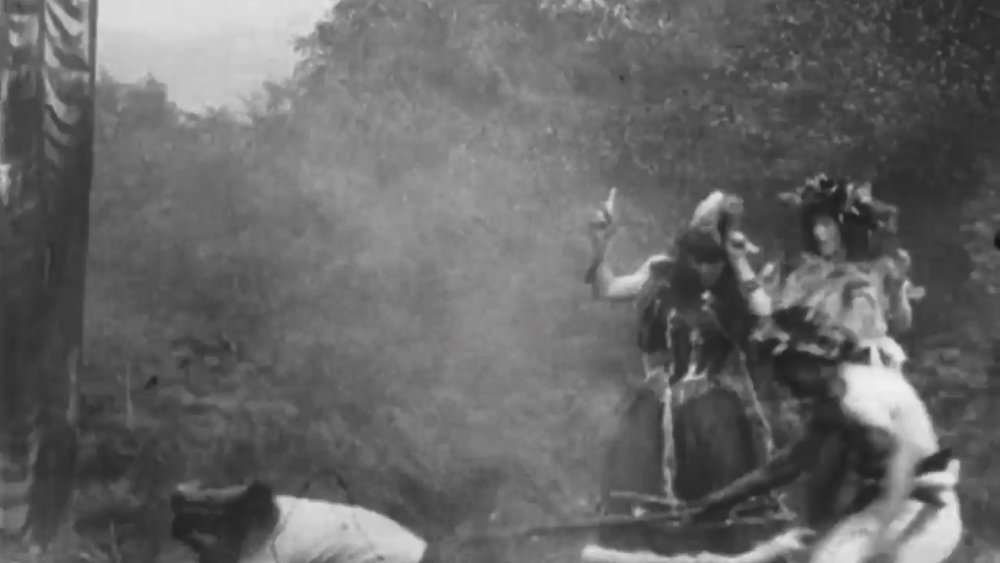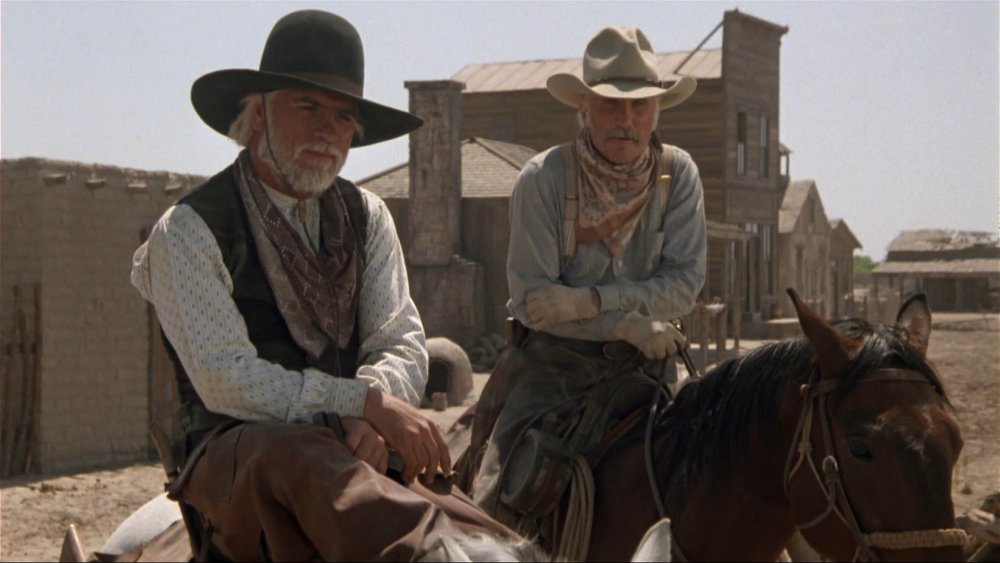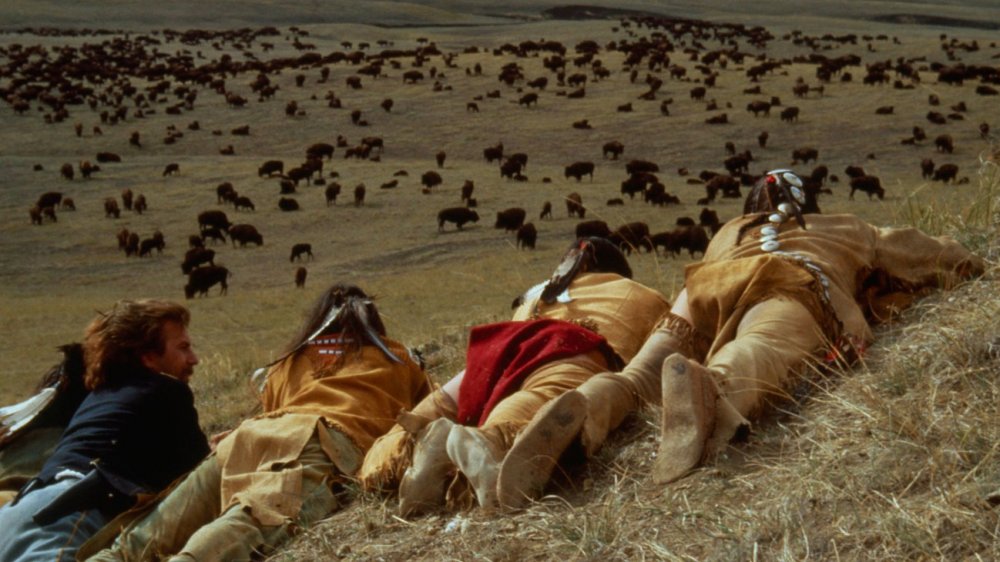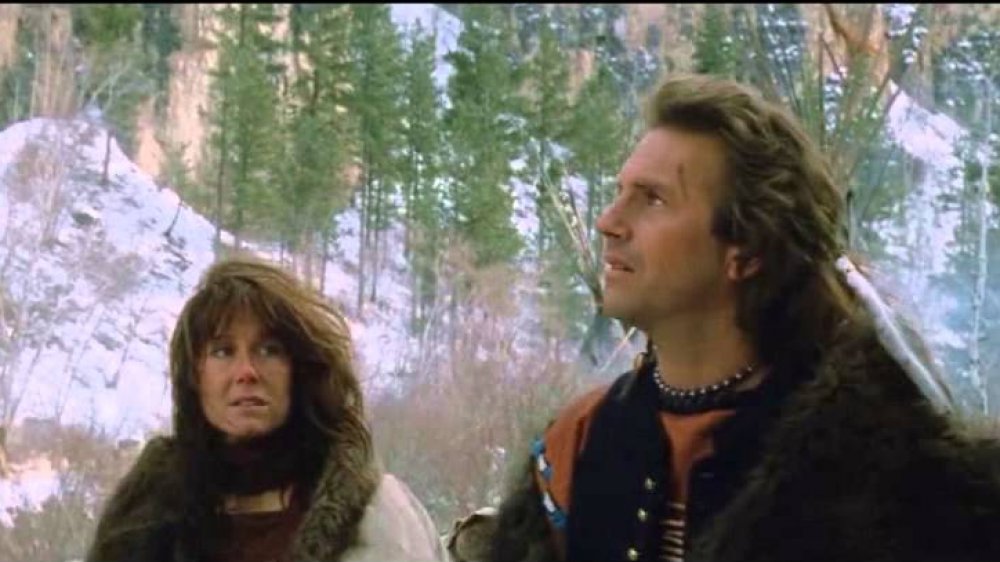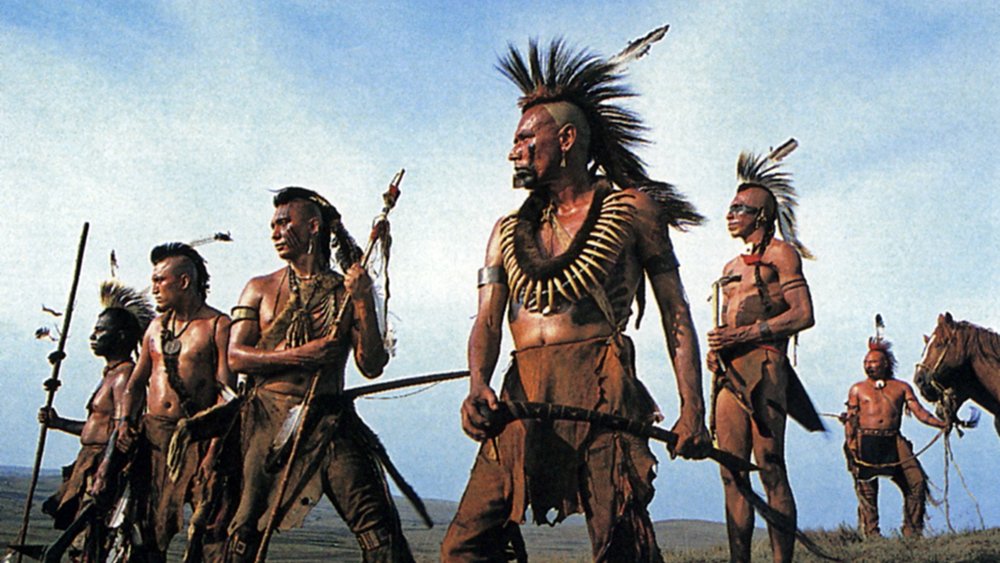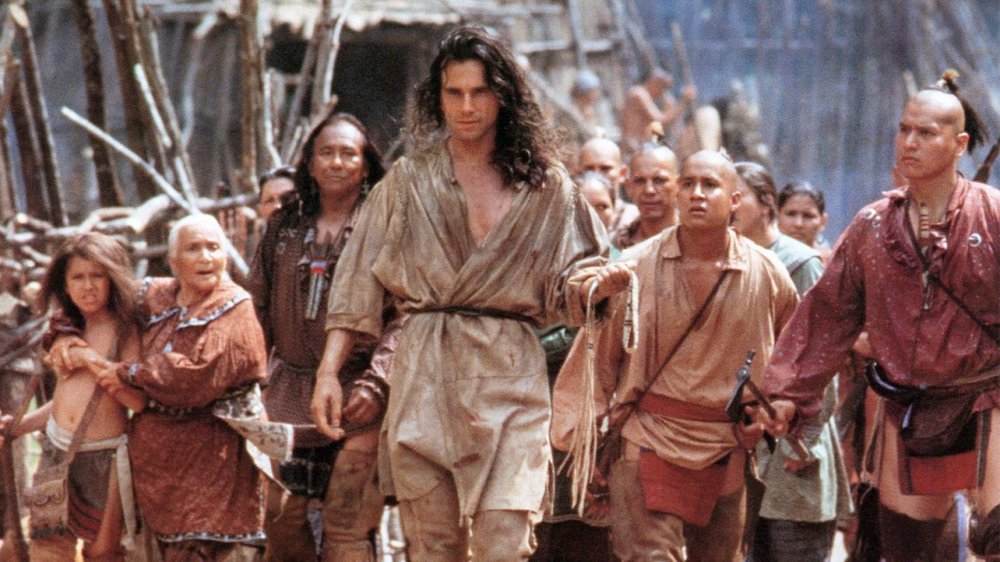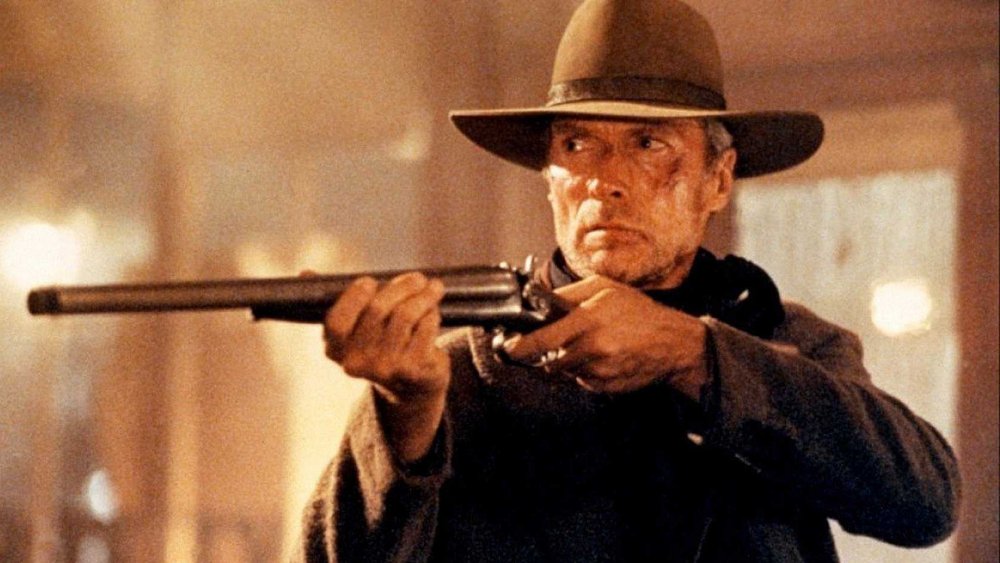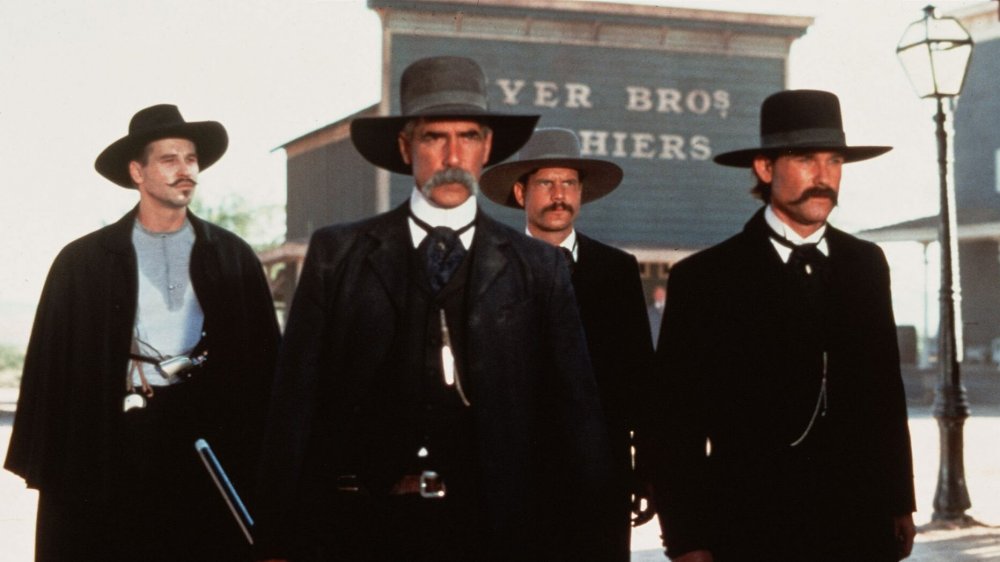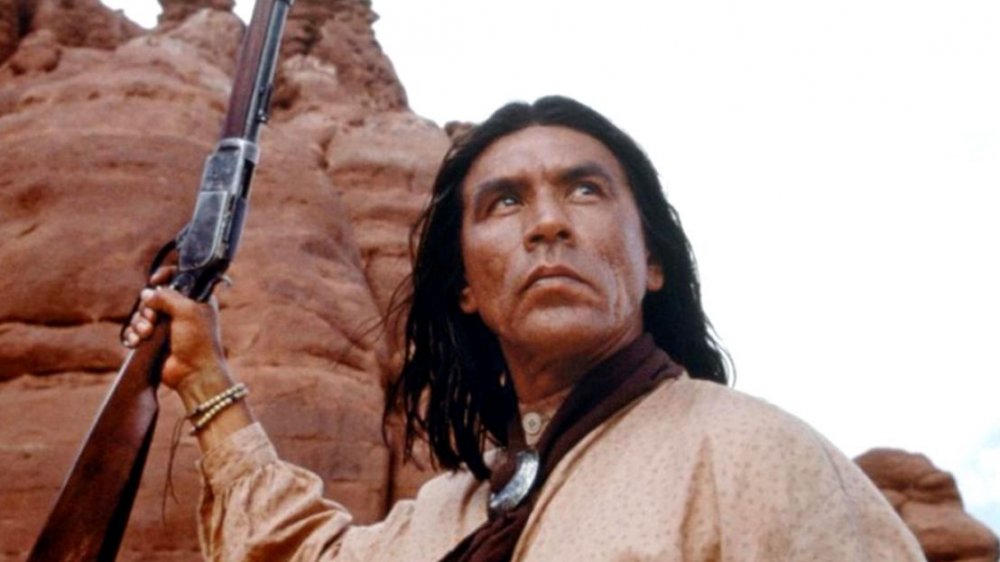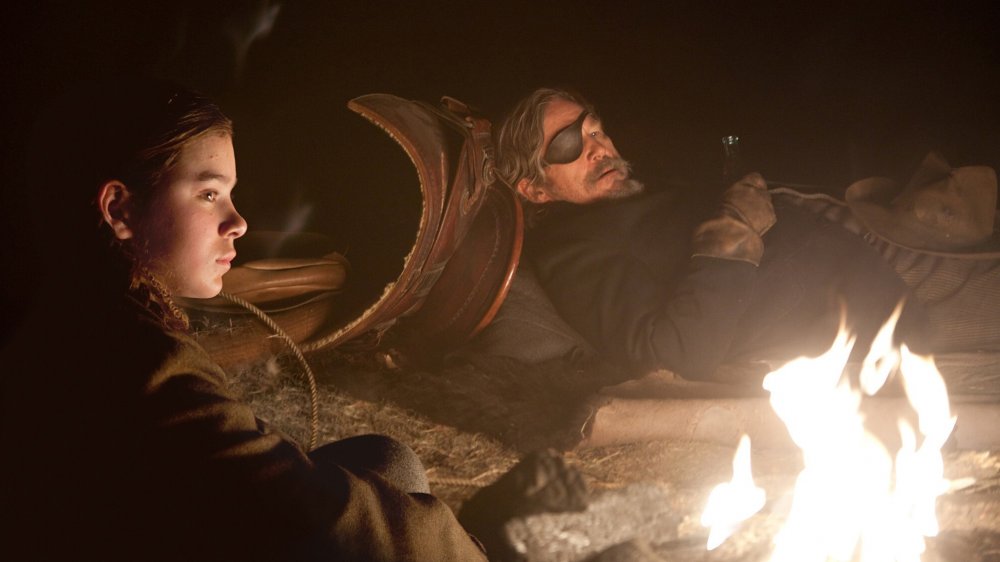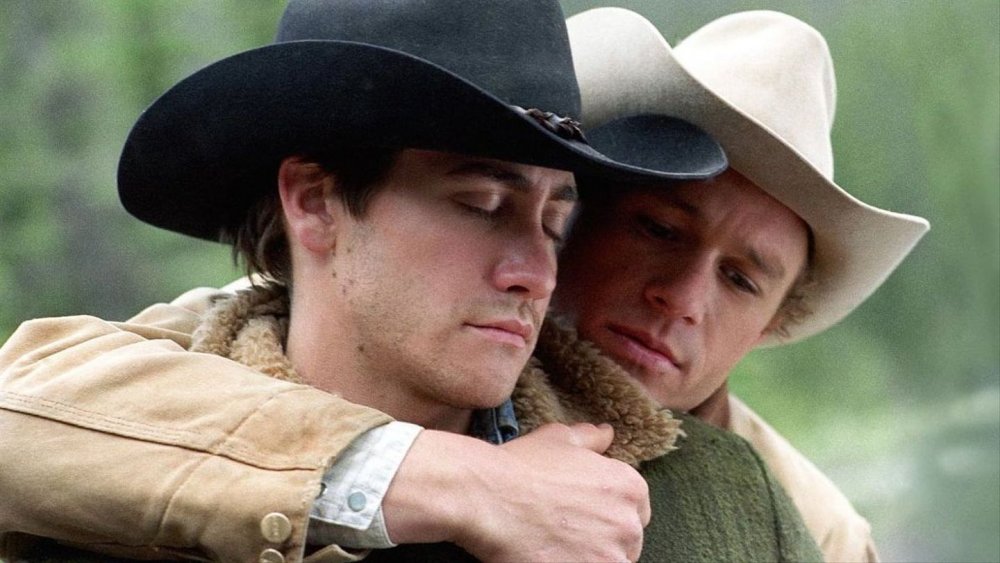How Dances With Wolves Revived The Western Genre
Dances with Wolves is an iconic film, made with co-producer, director, and actor Kevin Costner's blood, sweat, and tears. It tells the story of a white Civil War veteran named John Dunbar who is sent to the Western frontier and discovers that the Lakota who live there aren't the savages European settlers consider them. He bonds with these people, and falls in love with a white woman who lives among them. In the end, he risks everything he has to protect his new family.
Much of Costner's work is visible in the movie itself, but quite a lot of it happened behind the scenes. Much of this latter sort of work made sure the movie could happen at all, including fundraising and investing his own money when many studios passed on the film. His dedication to creating a high-quality adaptation of Michael Blake's novel was rewarded during awards season and at the box office, cementing Costner's place in movie history. But the film's legacy didn't just affect those directly connected to it: Dances led to a new kind of Western movie, with a new tone, a new seriousness, and a new take on the realities of the American frontier.
Westerns were an established but fading genre
By the time Dances was being made, most people were not interested in Western movies. And yet the genre had existed for as long as movies had been made, with the first Western being 1899's Kidnapping by Indians. Funnily enough, it was shot in the UK, not in the US! The genre really exploded from the 1930s to the 1960s, with an absolute plethora of Western movies coming out in that time. Westerns only became more popular with the star power of actors like the famous John Wayne added into the mix.
Westerns, however, began to decline in the 1970s – in part, due to cultural shifts in the world. Particularly, as more people became aware of the past and present struggles of Native Americans, hiring a bunch of actors to pretend to be "savages" didn't really work for audiences any longer. Sure, some Westerns continued to be made, but for the most part, interest had dwindled when Dances with Wolves was made and released.
Lonesome Dove (1989)
Lonesome Dove is a 1989 TV miniseries adaptation of a Western novel of the same name by Larry McMurtry. It's pretty beloved by fans of the Western genre, in no small part for coming out when "the only thing on TV deader than the miniseries was the Western." Lonesome Dove predates Dances with Wolves by a year, and while it didn't have the same broad feature film impact as Dances did, it did prove that there was interest in the Western genre. With stars like Robert Duvall, Tommy Lee Jones, Anjelica Huston, Danny Glover, and Diane Lane, it also has a lot of star power — especially for a TV production. Lonesome Dove won a slew of Emmys, and retains its lofty reputation to this day. When Lonesome Dove came out, TV was still considered a lesser form of art, and the Western was as dead as roadkill. But Lonesome Dove didn't let any of that slow it down. In its own way, Lonesome Dove set the stage for Dances with Wolves to take over the world.
Care and honesty towards the lives of Native Americans
One of the ways that Dances with Wolves was particularly groundbreaking is its compassionate representation of the Lakota people. Native Americans have long been stereotyped in film, particularly in Western films, in a way that is extremely harmful. Western movies were especially damaging to Native people in the United States at a time when their rights were quite restricted. Things began to shift as the 20th century wore on, and Native groups organized and fought for increased rights, safety, and respect. Much concrete progress took place: In 1978, Congress passed and President Jimmy Carter signed the American Indian Religious Freedom Act, which was one step towards protecting the rights of Native American people to practice their spiritual beliefs. But there was, and is, still a long way to go.
In contrast to earlier Westerns, Dances portrays its Native characters as nuanced, real, and human — not just caricatures. It's evidence of how cultural perception of Native American issues has shifted across the United States, over the decades. It's not uniformly perfect in this regard, nor universally beloved: Some Native American audiences have criticized the movie as a white savior narrative. Still, many Native actors involved have said that the movie helped their careers, and pushed for more complex storytelling about Native Americans in Hollywood.
The cruelty of Manifest Destiny
Though Dances with Wolves does focus on a white hero's journey, it is relevant to note that the way white settlers and soldiers are portrayed in Dances is vastly different from the way most earlier Westerns handled things. White people are not seen as all-important in Dances, and Manifest Destiny is not an acceptable dogma. Costner's character John Dunbar is human and flawed, and while it's true that the Lakota people he tries to protect hold a lot less power than he does, he wants to be their equal.
The truth of the American frontier does not conform to the way it was portrayed for so many decades in Western films. While Dances is not perfectly accurate either, it's a lot more honest than what came before. For the most part, other than Dunbar and Stands with a Fist (his love interest), white people are bringers of terror and violence in this film — and rightfully so. Their mission is, explicitly, to destroy Native culture, civilization, and people. When one really delves into the history of how settlers took over the American West, it reflects this tragic truth. And Dances deals with that in a way that, at the time, was unique for its genre.
Critical acclaim
Western movies have been made for decades, and have occasionally enjoyed cultural dominance. But only four Westerns have won the Oscar for Best Picture – Cimarron, Dances with Wolves, Unforgiven, and No Country for Old Men – and only 19 Western films have ever been nominated for Academy Awards. It's of note that of those Best Picture winners, only one came before Dances – and that was in 1930! Of the 19 nominated Western movies, five were made after Dances as well. But Dances with Wolves didn't stop with the Oscars: It was nominated for and won Golden Globes, Grammy Awards, Directors Guild of America Awards, Writers Guild of America Awards, and many more accolades. The movie not only did well with award committees, it blew away audiences, grossing $424 million at the worldwide box office — much to the shock of many in Hollywood. Many didn't see the potential in the project, but Costner did, and the effort he and the rest of the cast and crew put in made it into a film worthy of respect.
Last of the Mohicans (1992)
After Dances with Wolves, there was a resurgence of Western and Western-adjacent films. Last of the Mohicans is one of those, although it isn't exactly a traditional Western. Based on James Fenimore Cooper's frontier novels of the early 1800s, Mohicans tells the story of a white man, Hawkeye, adopted by one of the last survivors of the Mohicans, a Native American tribe. While Hawkeye is white, he's been a part of the Mohican tribe since childhood and doesn't identify with the white settlers — especially not the British soldiers. Given the fact that this movie is set in the 1750s, British soldiers are a particularly pressing problem.
Certainly white people play a primary role in the film, but as in Dances, Mohicans gives a nuanced, detailed view of the Native cultures it portrays. And like Dances, Mohicans was nominated for quite a few awards, and won an Oscar for Best Sound. It's set earlier than most traditional Westerns, and takes place largely in New York, but in its tone, approach to Native culture, and portrayal of its white characters, it is a great deal like Dances and a major part of its legacy.
Unforgiven (1992)
Clint Eastwood is certainly a name many associate with the Western genre, and his 1992 film Unforgiven, which he directed and starred in, plays no small part in that. Eastwood plays gunslinger Bill Munny, who is pulled out of his quiet retirement from violence for one more big job. It is one of few Western films that has won an Oscar for Best Picture, much like Dances, and was nominated for many other awards as well. It is a violent film, to be fair, but it is also extremely character driven. Though Native American people don't really feature in the film at all, it does feature Morgan Freeman as Munny's partner, which is a touch of diversity not seen in many earlier Westerns.
Eastwood works hard throughout the film to create a Western that is not what people might expect, much like Costner's work on Dances. It's entirely possible that a film of Unforgiven's caliber might have been made and done well without Dances, but it seems likely that Dances opened minds to the possibilities of the Western genre, so that Unforgiven could knock gunslinger tropes out of the park.
Tombstone (1993)
Let's be honest and upfront here: Tombstone isn't of the same caliber of film as Dances with Wolves, Last of the Mohicans, or Unforgiven. But the undeniable truth about Tombstone is that it is a very entertaining Western with a lot of impressive talent involved, including Kurt Russell as Wyatt Earp, Val Kilmer as Doc Holliday, and Sam Elliot and Bill Paxton as Wyatt's brothers Virgil and Morgan. Oh, and don't forget Charlton Heston, and a somewhat out of place Jason Priestley at the height of Beverly Hills 90210's popularity.
Tombstone was only nominated for two awards, both for Val Kilmer at the MTV Movie Awards, so it's definitely not like the previously referenced movies in that regard. But this story, which follows one of the most famous Wild West lawmen, Wyatt Earp, also features a lot of classic Western tropes, while still feeling fresh, modern, and exciting. Tombstone was never going to change the world, but it might just make the world more entertaining for two hours and ten minutes. And without the popularity of Dances, it's highly unlikely that a studio would have taken a chance on a movie like Tombstone.
Geronimo: An American Legend (1993)
Geronimo: An American Legend is another outlier when it comes to Westerns. This movie focuses on the legendary Apache leader Geronimo, played by renowned Native American actor Wes Studi (who is also in Dances). It is, perhaps, telling that Jason Patric, Gene Hackman, and Robert Duvall all get billing before Studi in a movie where he plays the primary and titular character. As you might have guessed, this is not a perfect movie, by any means. But Geronimo is remarkable in that it is a Western through and through — other than its focus on a Native American character. Like Dances, Geronimo is full of nuanced, complex characters, in which few are uncomplicated heroes — although there are definitely villains. The tone and style of the movie is definitely an homage to earlier Westerns, and it's unlikely that it would've been made without the success of Dances, and Studi's role in it.
Westerns of the 21st century
While the post-Dances Western resurgence initially only lasted a few years, its effects can still be felt today in more recent movies like 2007's The Assassination of Jesse James by the Coward Robert Ford and the 2010 True Grit remake. Both films have a similar tone and approach to Dances, although they certainly also have a great deal in common with other modern Westerns like Unforgiven. They're darker, grittier, but also show a lot of heart and even some comedy, while still getting the point across that the Western frontier was not a place where anyone was safe — even, or especially, famous outlaws. Both of these movies were nominated for multiple Oscars, and although neither won anything, they did win other awards. It's safe to say that while studios aren't popping out tons of Westerns these days the way they used to in the heyday of the genre, the Westerns that are being produced are of a different caliber. In that sense, films like these owe a debt to Dances as well.
Modern-day Westerns
One part of the genre we haven't touched on yet are the Westerns that take place in a more modern-day setting. After Dances, in addition to the classic style of Western we've already discussed, there was also an increase in movies with Western themes that don't take place in the frontier days, but in a modern setting. These offerings are as varied as the goofy City Slickers, the stirring Brokeback Mountain, and the brutal No Country for Old Men. Granted, Brokeback Mountain is more of a historical film, taking place in the 1960s, but that's a lot more modern than previous Westerns. Movies like these are proof that the Western genre doesn't have to be limited to old-school cowboy shoot-'em-ups set in the wild frontier. Westerns can transcend a particular time, and be about a certain kind of life that has happened over the centuries in the American West. And if Dances with Wolves had not renewed interest in the genre, we likely wouldn't get to see these kinds of films as often.
